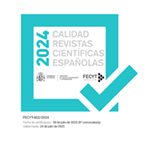Elements for a Social Theory of Technologically Mediated Communication: from Modernity to Postmodernity
Abstract
Mass and digital media (Technologically Mediated Communication) have been one of the most decisive motive forces in the transition from Modernity to Postmodernity. It has helped to change the nature of power that has evolved from the capacity to define reality for a few groups to a greater participation in the selection and exclusion of social imaginary elements. Social movements represent this diversification and more participation in the social construction of reality. This article proposes the theoretical tool the communicative paradox for explaining how communication works in a social level and how it is possible to explain society from a communicational perspective (communication as the primary and constitutive social process). The paradox, the symbolic power and the role of counter-ideologies (social movements) are three elements for the social theory of communication proposed in this paper.
Downloads
Article download
License
In order to support the global exchange of knowledge, the journal Estudios sobre el Mensaje Periodístico is allowing unrestricted access to its content as from its publication in this electronic edition, and as such it is an open-access journal. The originals published in this journal are the property of the Complutense University of Madrid and any reproduction thereof in full or in part must cite the source. All content is distributed under a Creative Commons Attribution 4.0 use and distribution licence (CC BY 4.0). This circumstance must be expressly stated in these terms where necessary. You can view the summary and the complete legal text of the licence.










